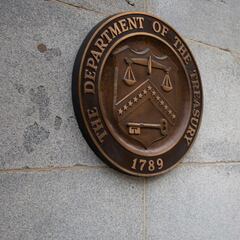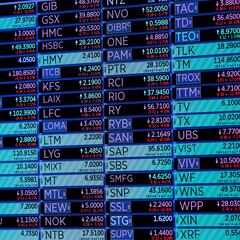What is causing inflation in US and when will it go down according to experts?
The first sign of a slowdown in the rate of inflation was seen in April but there are no guarantees this will continue as the world economy fluctuates.


The US is in the grips of a serious inflationary problem that has quickly become the battleground for the upcoming midterm elections. From the recession of the pandemic, the boom has quickly turned to bust has sky-high prices could force the country into recession.
Speaking at the White House, Biden said his, “plan attacks inflation and grows the economy by lowering costs for working families, giving workers well-deserved raises, reducing the deficit by historic levels and making big corporations and the very wealthiest Americans pay their fair share.”
Many will hope this will be the case before the prices become normalised and with historic wage stagnation a serious problem. Randall Kroszner, an economics professor at the University of Chicago and former Federal Reserve governor, said the rise in inflation would worry the Fed.
“That is where you look for evidence that inflation is becoming entrenched,” he said. Entrenched inflation is when inflation reaches a point where it becomes the new normal; prices of everything stay high and wages must rise to meet it.
While it is heartening to see that annual inflation moderated in April, the fact remains that inflation is unacceptably high and bringing it down is my top economic priority.
— President Biden (@POTUS) May 11, 2022
My plan will lower costs, meanwhile Congressional Republicans’ only plan is to raise taxes on families.
Economists had believed that the pandemic-era inflation would have already begun to subside by May 2022. However, it has only gotten worse. This cannot be blamed on the Biden administration nor the economists who misread the situation. In fact, no correct reading could have been made; Russia’s invasion of Ukraine upended the thinking on the pandemic recovery.
Inflation was already rising before the war in Ukraine...
The pandemic recovery programme of intensified public spending may have begun the first signs of high inflation. The inflation rate in February of 2021 was 1.7 percent, just under the Federal Reserves 2 percent target. However, from the following April inflation began to take a sharp rise to 4.2 percent, so far at 8.5 percent at time of publication.
What was to blame? There are many factors. Money that was saved by the American middle class during the pandemic enabled them to have increased spending power when businesses were able to reopen. On top of this, supply chain problems caused by covid-19 drove up the prices of goods further. The Fed kept interest rates low, encouraging people and businesses to borrow money without having big repayments
It was expected to be a short surge of inflation followed by a gradual but persistent reduction in prices over the space of multiple years. Modelling gathered by the Peterson Institute for International Economics (PIIE) suggested this.
“The inflation surge of 2021 is unlike anything seen in the past 40 years. This episode may prove salient for firms, workers, and households in a way that harkens back to the 1970s” PIIE said in an article discussing the salient inflation. But the organisation could not have predicted the geopolitics of 2022 that have sunk hopes of a quick fix to the US inflationary problems.
... the war in Ukraine has exacerbated existing problems
While the Biden administration hoped the inflation caused by the pandemic recovery would be transitory, the war in Ukraine has caused an even deeper economic crisis that threatens many more countries than just the US.
As both Russia and Ukraine are large producers of natural resources, the price of commodities has gone through the roof. This is especially true for natural gas and oil as Russia has been sanctioned by much of NATO, cutting a large part of the world off from such an important resource. The cost of gas in the US has continued to grow, soaring to an all-time high of $4.33 in March 2022, up from a pandemic low of $1.94 in May 2020.
Related stories
The national average price could hit $4.50 a gallon or even higher this summer. “Anything goes from June 20 to Labor Day,” said Tom Kloza, global head of energy analysis for the Oil Price Information Service.
How any reporter can look around, see record inflation, failure of BBB, the coordinated rightwing attacks on teachers, trans, black people; cynical exploitation of covid politics by GOP & conclude democrats are polling bad because of a slogan from 2yrs ago. Absolutely delusional
— Adam H. Johnson (@adamjohnsonNYC) May 6, 2022
The US has taken to expanding its own resource gathering to fill the gap, despite fears for the environment. With the primary driver of inflation being fuel, which makes everything more expensive, it will take the discovery of alternate fuelling methods before inflation can slow. A big opportunity for renewable energy to step up.

